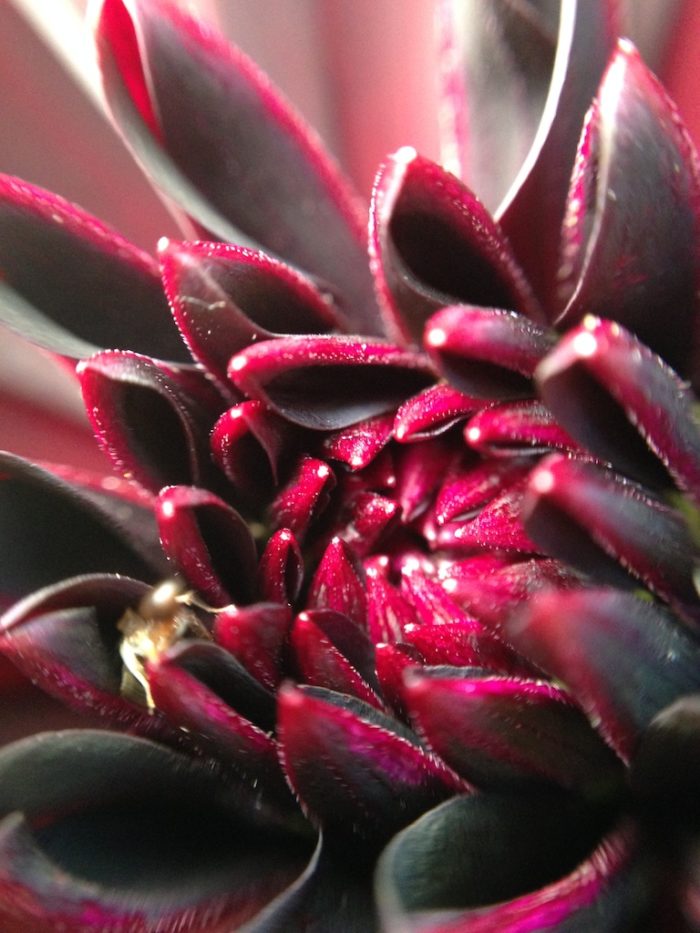
I don’t think I could cope very well without Dahlias. Not that I would burst into hysterical tears or run around screaming but at this time of year they are just getting into their stride and bringing in a bit of very welcome late colour to the garden. A decade or so ago that is not something that I would ever have said as the dahlia was a very unfashionable and very few people wanted them in their gardens as they were considered too brash and vulgar.
Since then they have had a massive and well deserved revival.

The dahlia is native to Central America where the species is a big scrambly thing quite far removed from the varieties we see today. It has small flowers and is generally not that impressive. From Mexico it was exported to the Botanical Gardens in Madrid and from there it was circulated around Europe.
Incidentally, one of the first Europeans to record the dahlia was the French botanist Nicolas-Joseph Thiery de Menonville. He was in Mexico to steal the Cochineal bug (much prized as a food colouring) from under the eyes of the Spanish. This he succeeded in doing, along with seeds of the Opuntia (Prickly Pear) upon which the insect feeds. He then set up a very successful plantation on the island of Saint Dominigue (now Haiti).

Once they arrived in Europe they enjoyed a very brief moment as a food source: the big fat tubers are edible and there was a thought that they might be an alternative to the potato: this idea came to nothing when the first northern european winter reduced the whole lot to frozen sludge (they are only hardy to Zone 8). That and the fact that they don’t actually taste terribly good!
Anyway, from these species clever plantspeople have bred innumerable hybrids in almost every colour (except blue) and in many different shapes. One of the things that makes this possible is that if you sow the seed from any dahlia then every seed will produce a flower with a different shape and colour. Most of them will be unexciting but every so often a new dahlia will emerge so you can easily see why there are so many different possibilities. My grandmother grew dahlias in her vegetable garden many years ago. I remember that they were grown in strict rows with each plant rigidly supported by a stout bamboo cane.

The dahlia tide turned when the late great Christopher Lloyd tore out the old rose garden at Great Dixter and replaced it with an exotic garden full of (amongst other things) bananas and brightly coloured dahlias. People started to look at dahlias differently and nowadays we grow them they are mixed it amongst the rest of the plants in the borders. They are very useful for filling the gaps made as early summer and spring plants fade away.
By the way, the plant is named after Anders Dahl, the great Swedish botanist and pupil of Linnaeus. If you have an iPad then there is a fabulous article about Dahlias written by Andy Vernon in the summer Episode of intoGardens – if you have not yet discovered this app, it is the world’s first garden magazine app designed especially for iPads. details here.

Dahlia Arabian Night |

Dahlia Honka |
Fine Gardening Recommended Products

A.M. Leonard Deluxe Soil Knife & Leather Sheath Combo
Fine Gardening receives a commission for items purchased through links on this site, including Amazon Associates and other affiliate advertising programs.


















Comments
i learn more tidbits of horticultural history reading your articles than i do anything else. always a treat, thanks!
THank you. There is a lot of interesting stuff out there.
de nada. you're gonna have to write faster,,,,,,,,i'm hungry for the next post!
Log in or create an account to post a comment.
Sign up Log in